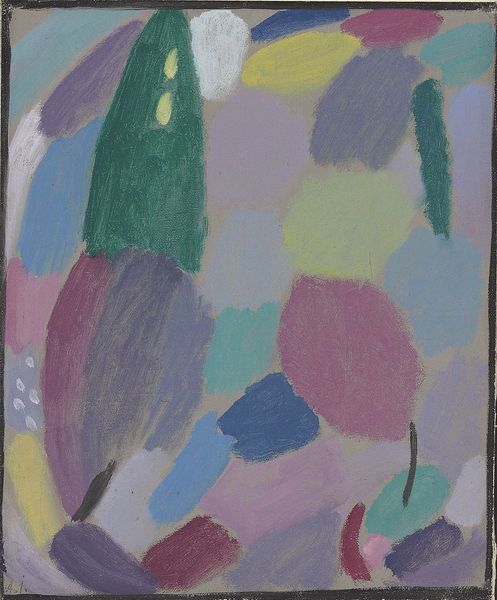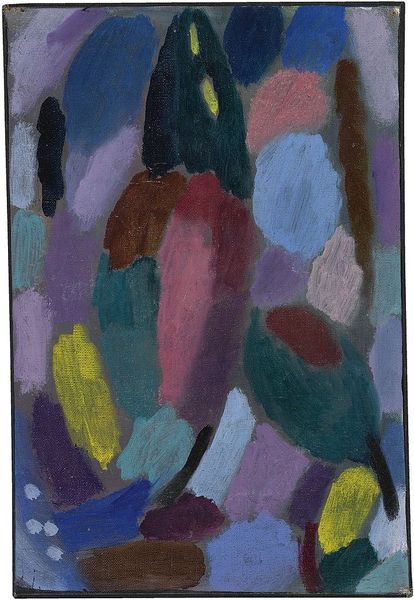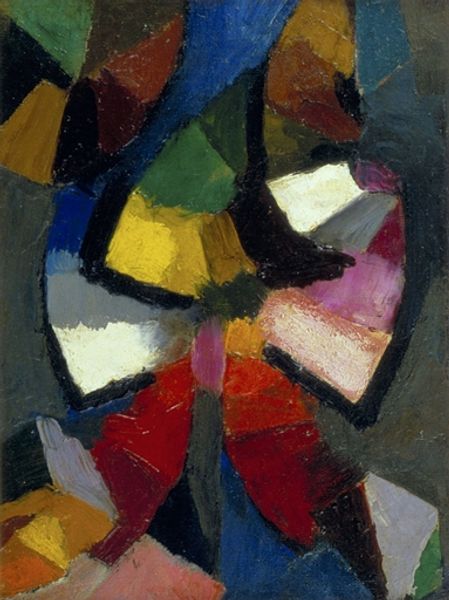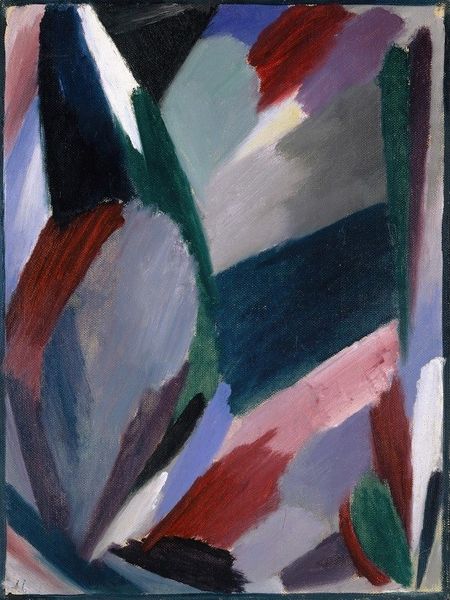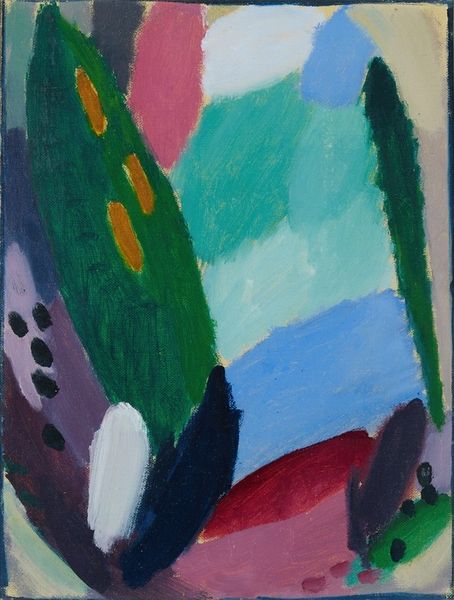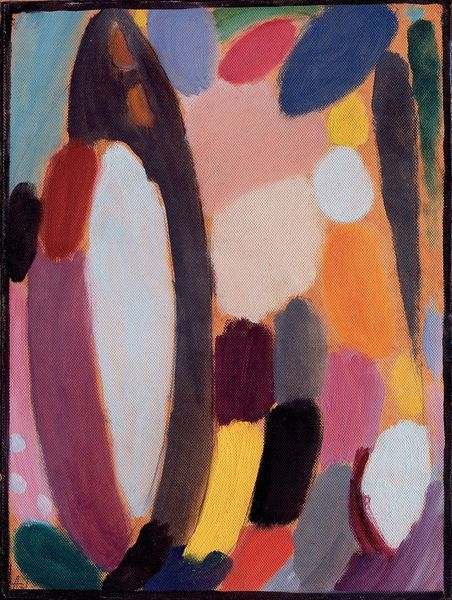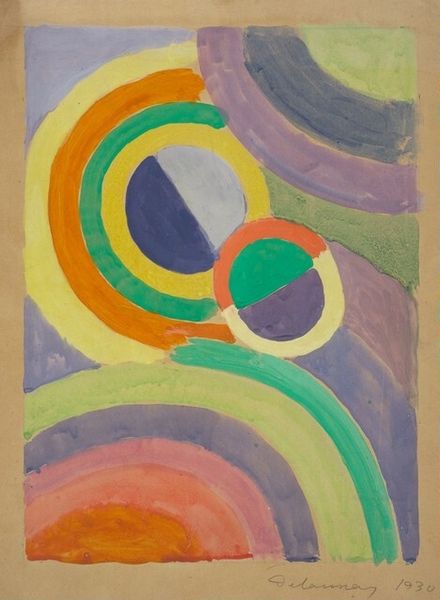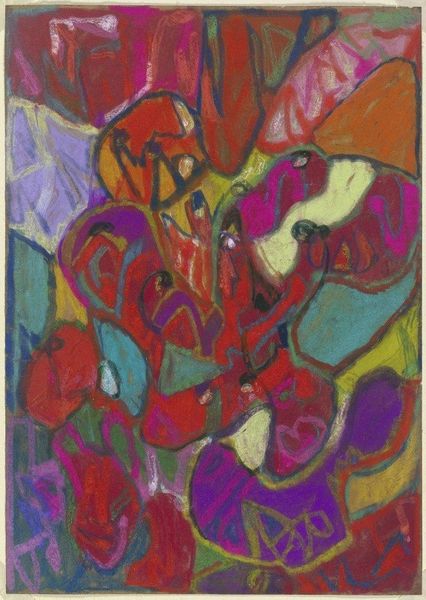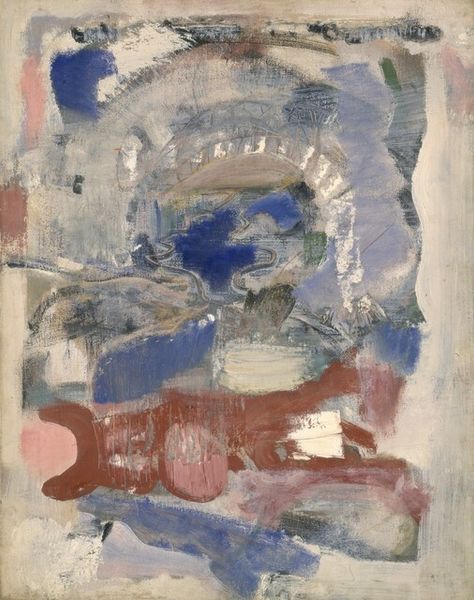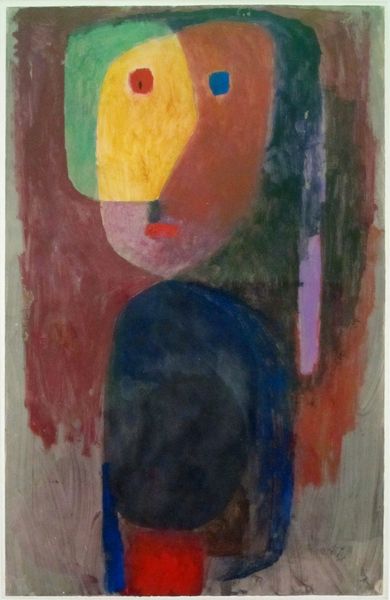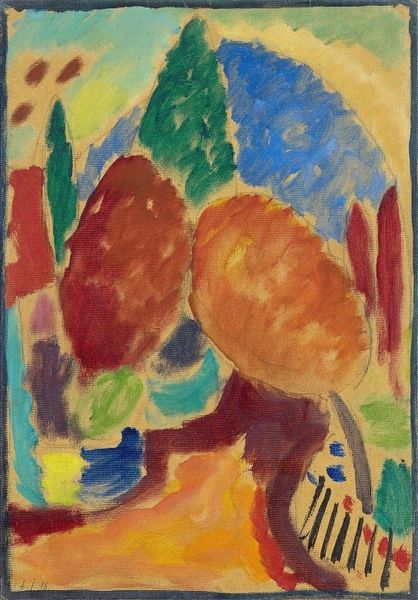
Copyright: Public Domain: Artvee
Editor: Here we have Alexej von Jawlensky's "Variation, Twilight" from 1916, made with oil paint. It's really striking how he uses these blocks of color, almost like tesserae in a mosaic, to create this…moody, atmospheric scene. What do you see in this piece? Curator: The texture itself becomes a narrative. The brushstrokes, the viscosity of the oil paint...consider the scarcity of materials during wartime. Jawlensky uses paint lavishly, yet these very materials signal a time of deprivation. Each dab represents a negotiation between artistic expression and material constraint. What kind of labor do you think went into creating these “variations”? Editor: Well, you can see the layers of paint and it seems like a pretty physical process. I imagine he was deliberately building up the surface. But, isn't the focus on form and color primarily aesthetic? Curator: Yes, on the surface, the visual composition is alluring. But, it's important to look beyond the immediate appearance. This piece can be seen as an artifact of its time. How was oil paint acquired and by whom? During this period who had access to art materials and under what conditions? Editor: That's fascinating, I never thought about it in terms of access to materials during wartime! Curator: These vibrant colours exist not despite, but *because* of that scarcity, don’t you agree? By focusing on the materiality, we understand that every element – from pigment to the canvas support – speaks to broader historical forces at play. Editor: It definitely shifts the perspective! I was initially just focused on the colours and forms, but seeing it as a product of specific material conditions adds a whole new layer. Curator: Indeed, materiality adds new levels of interpretation! We began with colour, and ended at consumption, labour and materials.
Comments
No comments
Be the first to comment and join the conversation on the ultimate creative platform.
